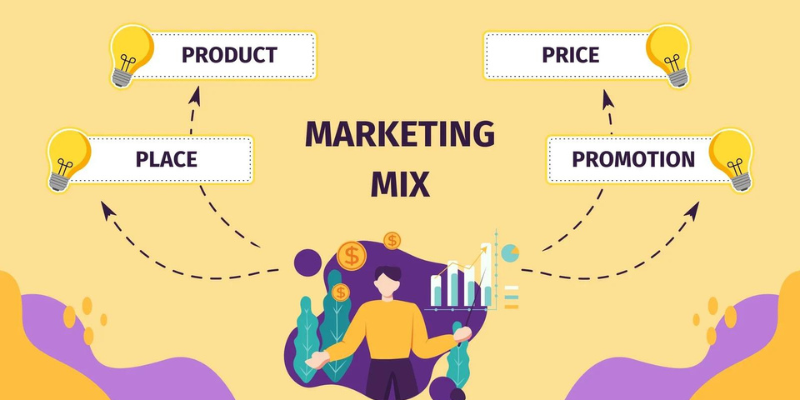Group behaviour is a fundamental aspect of organisational behaviour, playing a crucial role in how individuals form groups and teams within organisations and how these dynamics influence behaviour and performance. The study of group behaviour encompasses various topics, including leadership, communication, conflict resolution, and teamwork, which are all critical to understanding how groups function and thrive within an organisational setting (Robbins & Judge, 2021). This article searches into these key elements, highlighting their significance and impact on organisational success.
Formation of Groups and Teams
Groups and teams are essential components of modern organisations. They form naturally as individuals come together to achieve common goals. The formation of these groups can be formal or informal. Formal groups are established by the organisation to achieve specific objectives, such as project teams or committees. Informal groups, on the other hand, emerge naturally based on personal relationships and common interests among employees (Forsyth, 2018).
The process of group formation typically follows Bruce Tuckman’s (1965) model of group development, which includes the stages of forming, storming, norming, performing, and adjourning. During the forming stage, group members get to know each other and establish initial relationships. The storming stage is characterised by conflicts and disagreements as individuals assert their opinions. In the norming stage, the group develops norms and cohesion. During the performing stage, the group operates efficiently towards its goals. Finally, the adjourning stage marks the dissolution of the group after achieving its objectives (Tuckman & Jensen, 1977).
Leadership and Group Behaviour
Leadership is a pivotal element in shaping group behaviour and dynamics. Effective leaders guide groups through the various stages of development and help them overcome challenges. Leadership styles can significantly impact group performance. For instance, transformational leaders inspire and motivate group members by creating a vision and fostering an environment of trust and innovation (Northouse, 2018). In contrast, transactional leaders focus on tasks, rewards, and penalties to achieve group objectives.
Leaders play a crucial role in establishing group norms and culture. By setting clear expectations, providing feedback, and modelling desired behaviours, leaders influence how group members interact and collaborate. The presence of strong leadership can enhance group cohesion, reduce conflicts, and improve overall performance (Yukl, 2013).
Communication in Groups
Communication is the lifeblood of group behaviour. Effective communication ensures that group members share information, ideas, and feedback, which is essential for decision-making and problem-solving (Keyton, 2017). In organisations, communication can be formal or informal, and it occurs through various channels, including face-to-face meetings, emails, and virtual platforms.
Barriers to effective communication, such as misunderstandings, language differences, and lack of feedback, can hinder group performance. Therefore, fostering open and transparent communication is vital. Active listening, clarity in conveying messages, and encouraging participation from all group members are key practices that promote effective communication within groups (Brown, 2019).
Conflict Resolution
Conflict is inevitable in any group setting due to differences in opinions, personalities, and interests. However, how conflicts are managed can significantly impact group behaviour and performance. Constructive conflict resolution involves addressing conflicts positively and finding solutions that satisfy all parties involved (Rahim, 2011).
Several conflict resolution strategies can be employed, including avoiding, accommodating, competing, compromising, and collaborating. The choice of strategy depends on the nature of the conflict and the desired outcome. Collaborative approaches, where group members work together to find mutually beneficial solutions, are often the most effective in maintaining group cohesion and achieving long-term success (Thomas & Kilmann, 2008).
Teamwork and Collaboration
Teamwork is the essence of group behaviour in organisations. Effective teamwork involves coordinated efforts where group members share responsibilities, leverage each other’s strengths, and work towards common goals (Kozlowski & Ilgen, 2006). High-performing teams are characterised by trust, mutual respect, and a shared sense of purpose.
The benefits of effective teamwork are manifold. It enhances creativity and innovation through diverse perspectives, improves problem-solving capabilities, and increases productivity (Edmondson, 2012). Organisations that foster a culture of collaboration and teamwork tend to have higher employee satisfaction and retention rates (Levi, 2015).
Group behaviour is a multifaceted aspect of organisational behaviour that encompasses the formation of groups and teams, leadership, communication, conflict resolution, and teamwork. Understanding these elements is crucial for organisations aiming to enhance group dynamics and achieve higher performance levels. By fostering effective leadership, promoting open communication, managing conflicts constructively, and encouraging teamwork, organisations can create a positive and productive work environment that drives success.
References
Brown, D. R. (2019) An Experiential Approach to Organisation Development. Pearson.
Edmondson, A. C. (2012) “Teamwork on the Fly”. Harvard Business Review. [Online]. Available at: https://hbr.org/2012/04/teamwork-on-the-fly. [Accessed on 15 June 2024].
Forsyth, D. R. (2018) Group Dynamics. Cengage Learning.
Keyton, J. (2017) Communication and Organisational Culture: A Key to Understanding Work Experiences. SAGE Publications.
Kozlowski, S. W. J., & Ilgen, D. R. (2006) “Enhancing the Effectiveness of Work Groups and Teams”. Psychological Science in the Public Interest. 7(3), pp. 77-124.
Levi, D. (2015) Group Dynamics for Teams. SAGE Publications.
Northouse, P. G. (2018) Leadership: Theory and Practice. SAGE Publications.
Rahim, M. A. (2011) Managing Conflict in Organisations. Transaction Publishers.
Robbins, S. P., & Judge, T. A. (2021) Organisational Behavior. Pearson Education.
Thomas, K. W., & Kilmann, R. H. (2008) Thomas-Kilmann Conflict Mode Instrument. Xicom, Incorporated.
Tuckman, B. W., & Jensen, M. A. (1977) “Stages of Small-Group Development Revisited”. Group & Organisation Studies. 2(4), pp. 419-427.
Yukl, G. (2013) Leadership in Organisations. Pearson.













